Connecting Oculus Quest 2 to Your PC: A Complete Guide
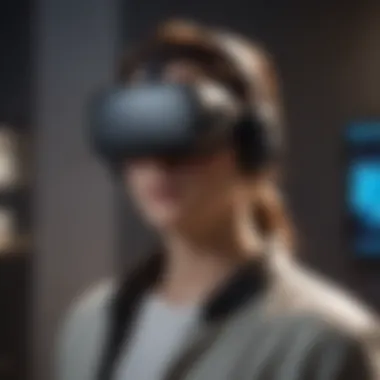
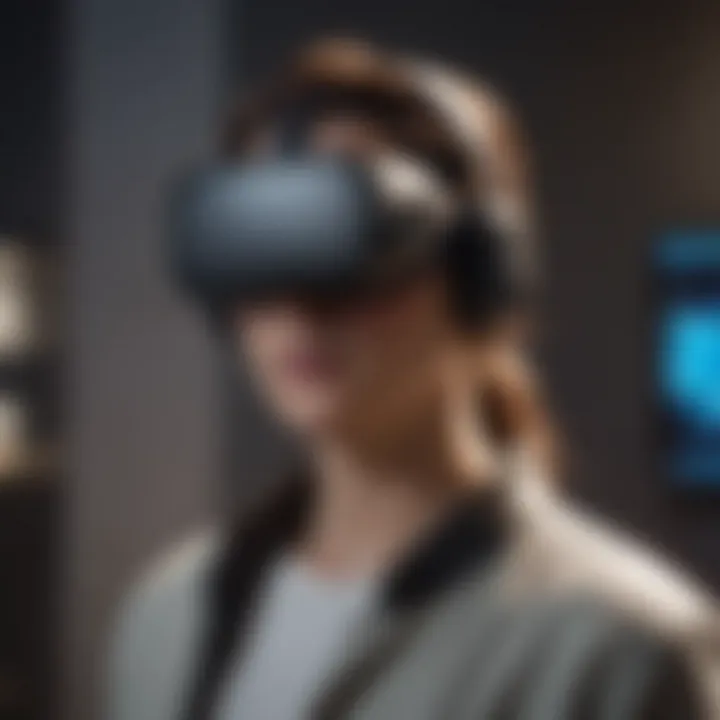
Intro
In the world of gaming, connecting your Oculus Quest 2 to a PC can open up a treasure trove of immersive experiences. Picture this: navigating vast, virtual landscapes with the power of your computer's robust hardware, or diving into demanding games that the Quest alone might struggle to handle. Understanding how to establish this connection isn't just a technical task; it's a pivotal step toward unlocking the full potential of this fascinating device.
This guide is tailored for everyone, from the tech-savvy gamer to the occasional user who just wants to dip their toes into the waters of virtual reality. We’ll explore both the wired and wireless methods of connecting the headset to your PC. Each method has its perks and challenges. As the saying goes, "There’s more than one way to skin a cat," and the same applies when it comes to connecting devices. Whether you prefer the reliability of cables or the freedom of wireless connections, we're here to walk you through it.
We'll also touch on some essential aspects you’ll need to consider, such as hardware requirements, software setups, and troubleshooting techniques. Our goal is to equip you with the knowledge to navigate this relatively new but exciting realm effectively. By the end of this article, you'll be able to enjoy the enhanced gameplay experiences available on your Oculus Quest 2, providing you with a view of VR that is as expansive as the virtual worlds themselves.
Preface to Oculus Quest
In the rapidly evolving realm of virtual reality, the Oculus Quest 2 stands out as a prominent device that merges accessibility with advanced technology. This section emphasizes its significance as a gateway into immersive experiences, not just for casual users but also for dedicated gamers and professionals alike. A well-rounded understanding of the Oculus Quest 2 contributes importantly to the broader discussion on how to establish an effective connection to a PC, making the device even more versatile.
Overview of Oculus Quest Features
The Oculus Quest 2 is equipped with an array of impressive features. It boasts a high-resolution display of 1832 x 1920 pixels per eye, bringing vivid visuals that enhance gaming realism. This device is powered by a Qualcomm Snapdragon XR2 chipset, which ensures smooth performance and responsiveness, setting it apart from its predecessors. Additionally, the Quest 2 houses built-in speakers and an optional headset that caters to audio immersion, further enriching the user experience.
Moreover, its standalone capabilities enable users to enjoy a sizable library of games and applications without the weight of cables or external hardware. The design is lightweight and user-friendly, making it accessible to a broad audience, from first-time VR explorers to seasoned gamers seeking advanced options.
Importance of Connecting to PC
The utility of Oculus Quest 2 extends tremendously when connected to a PC. By establishing this connection, users can tap into an extensive library of PC-based VR games and applications that vastly exceed the offerings available on the standalone platform.
Connecting to a PC can also leverage the greater processing power of a gaming rig, enabling higher fidelity graphics and more intricate virtual environments. This interaction creates a platform for immersive experiences, drawing in professional users, developers, and content creators looking to push the limits of what VR can do. The ability to engage with friends through multiplayer experiences signals another key advantage that awaits those who capitalize on the connectivity options available.
"Connecting to a PC not only enhances the gaming experience but also opens the door to creative possibilities in virtual reality."
As we delve deeper into the specifics of establishing a connection, it's clear that understanding the foundational aspects of Oculus Quest 2—its features and the value of PC connections—sets the stage for a more comprehensive and fulfilling virtual reality experience.
Understanding the Connection Methods
To fully appreciate the immersive experience that the Oculus Quest 2 offers, it's paramount to understand the different methods of connecting it to a PC. This section serves as a foundation for users, whether you're a casual player dabbling in virtual reality or a seasoned gamer wanting to enhance your setup.
When discussing connection methods, it’s crucial to examine the differences between wired and wireless approaches. Each method carries its own set of advantages and challenges. This knowledge arms users with the necessary information to make an informed choice based on their unique gaming habits, system requirements, and performance expectations.
Wired Connection vs. Wireless Connection
The choice between a wired and wireless connection often feels like choosing between a rock and a hard place. Wired connections, as sturdy as an old oak tree, promise reliable performance with minimal latency. On the other hand, wireless solutions offer the freedom to spin around your living room without tripping over cables, akin to a bird finally breaking free from its cage.
Wired Connection:
- Reliability: You generally get a stable connection, ideal when playing fast-paced games where every millisecond counts.
- Quality: It allows for higher resolutions and refresh rates, providing crisp visuals and smoother gameplay.
- Accessibility: Setting up a wired connection can be straightforward, especially for users familiar with USB ports and drivers.
Wireless Connection:
- Flexibility: Enjoy the freedom of movement; no stringing cables across the room. It is almost like dancing without restraints.
- Setup: Once configured correctly, it permits quick and easy access without fussing with physical connections.
- Social Aspects: Wireless setups accommodate sharing your VR experiences with friends, making it easier to lend a headset for a few rounds.
Benefits of Each Method
Both wired and wireless connections present unique benefits that cater to different player preferences. Understanding these can help optimize your gaming experience:
Benefits of Wired Connections:
- Lower Latency: Important for competitive gaming, where timing is critical.
- Consistent Power Supply: No worries about battery levels or interruptions.
- Simplicity: Fewer potential connection issues or performance fluctuations.
Benefits of Wireless Connections:
- Movement Freedom: Allows the user to move around without constraints.
- Easier Sharing: Friends can jump in and out of games without needing to reconfigure connections.
- Aesthetics: A tidy space with no tangled cables can make a big difference in your gaming setup.
"The choice of connection methods might seem trivial, but understanding them can unlock the true potential of your virtual experiences."
In summation, recognizing the differences between wired and wireless connections is fundamental for users eager to get the most out of their Oculus Quest 2. Each method carries its own set of strengths and drawbacks, and your choice should resonate with your gaming style and expectations.


Requirements for a Successful Connection
Establishing a solid connection between your Oculus Quest 2 and PC is crucial for an enhanced virtual reality experience. This connection not only facilitates access to a wealth of games and applications that may not be present in the standalone setup, but it also enables users to tap into the vast potentials of PC graphics, performance, and game libraries. However, to ensure that this connection operates smoothly, certain requirements must be met. These include both hardware specifications and software prerequisites. By addressing these critical elements, you can avoid common pitfalls that may hinder your VR experience.
Hardware Specifications
When it comes to hardware, the performance of your PC components can be the difference between an immersive experience and a frustrating one. At a minimum, here’s what you should consider:
- CPU: A mid-range processor such as an Intel i5 or AMD Ryzen 5 is a good starting point. These models offer the balance between cost and performance, ensuring your VR experiences are smooth.
- GPU: The graphics card cannot be overlooked. Nvidia GTX 1060 or AMD Radeon RX 480 are the baseline options, but more powerful GPUs like the Nvidia RTX series will work wonders in enhancing graphic fidelity for smooth gameplay.
- RAM: 8GB is the bare minimum, but bumping it up to 16GB can significantly improve the overall experience, especially when multitasking.
- USB Ports: Ensure your PC has USB 3.0 ports available for a wired connection. Wired is often more reliable, helping reduce latency during gameplay.
- Internet Requirements: For wireless connections, needing a robust Wi-Fi router that supports at least 5GHz frequency with ample bandwidth is essential. A wired connection can mitigate this requirement, but for those aiming to use Air Link, a strong, stable network is a must.
Additionally, keep in mind that VR can be resource-heavy. Having excess heat can lead to throttling performance. Therefore, it’s advisable to have adequate cooling solutions in place.
Software Prerequisites
Once your hardware checks out, it’s time to turn your attention to the software needs:
- Oculus App: Download and install the Oculus software on your PC. This software acts as the bridge between your headset and the PC, also offering device management features.
- Windows Version: It’s important to be running Windows 10 or later. Older versions of Windows are not compatible with the latest updates that might be required for the Oculus software.
- Graphics Drivers: Updating GPU drivers is crucial for ensuring you have the most optimized performance. Regularly check whether your drivers are up-to-date, as graphics card manufacturers often release updates to improve VR performance.
- Oculus Link Setup: If you are going for the wired option, ensure that the Oculus Link feature is enabled in the settings. Without this setting activated, you might run into some connectivity headaches.
- Network Configuration (for Air Link): Ensure your router settings allow for device connections and consider using a dedicated network for your VR setup to reduce potential interference.
Always keep your software updated to enjoy the latest features and improvements. Failing to do so could mean missing out on crucial enhancements or workarounds for bugs.
By meeting the hardware and software requirements outlined here, you're laying down a solid foundation for a successful connection between your Oculus Quest 2 and PC. This step is indispensable for optimizing your VR adventures, giving you the smooth and seamless experience that true gamers crave.
Connecting via USB Cable
The process of connecting your Oculus Quest 2 to a PC via USB cable is an essential topic in maximizing your virtual reality experience. For users who seek a reliable and direct interaction with their systems, opting for a wired connection offers distinct advantages. Whether you’re looking to enjoy graphically intensive games or stream experiences that require low latency, USB connectivity lays a solid foundation.
Just think about it: When you connect via USB cable, you benefit from a steady data transfer rate and minimize issues related to signal interference, which is often a concern in wireless setups. Moreover, a wired connection often allows for smoother performance without the hiccups that can sometimes plague wireless connections depending on your network setup and environment.
Selecting the Right USB Cable
Choosing the right USB cable can feel like finding a needle in a haystack with numerous options out there. But worry not; simplifying the criteria can help. You need a cable that not only fits your Oculus Quest 2 but also supports high-speed data transfer. The Oculus Quest 2 typically uses a USB-C connector.
Things to consider:
- Length: Longer cables give you the freedom to move around, but too long can lead to clutter.
- Compatibility: Ensure the cable works seamlessly with both the Oculus Quest 2 and your PC.
- Data transfer rate: Look for cables that specify fast data transfer speeds, like USB 3.0 or above, to avoid lag.
Installation of Oculus Software
Before you can dive into the VR world, having the correct software installed on your PC is a must. The Oculus software facilitates the connection between your headset and computer, providing the necessary drivers and updates.
To install the software, follow these steps:
- Visit the official Oculus website and download the Oculus app for PC.
- Follow the onscreen instructions to install the software, making sure to create an Oculus account if prompted.
This software isn’t just a formality; it manages the VR experience on your PC. You need it for accessing a variety of games and applications designed specifically for PC VR.
Step-by-Step Connection Process
Now that you’ve prepared your hardware and installed the software, it’s time to get connected. Here’s a straightforward guide:
- Power on your Oculus Quest 2 and make sure it’s charged.
- Plug the USB-C cable into your PC and connect the other end to the headset.
- The Oculus software on your PC should automatically recognize the device.
- You may see a prompt in the Quest 2 headset asking for permission to enable data access; accept it.
- Follow any additional instructions that appear on the screen to finalize the connection.
"Using a USB connection can lead to a more immersive experience with fewer interruptions."
Confirming the Connection
Once everything is hooked up, confirming that your Oculus Quest 2 is properly connected is the next logical step. Here’s how to check:
- Open the Oculus software on your PC. Navigate to the Devices tab.
- Look for your Oculus Quest 2 in the listed devices. If it appears, congratulations—you are connected!
- You can further verify the connection by launching a VR application or game through the software and ensure everything runs smoothly.
If your headset doesn’t show, you might need to troubleshoot or confirm that both ends of the cable are secured in their ports.
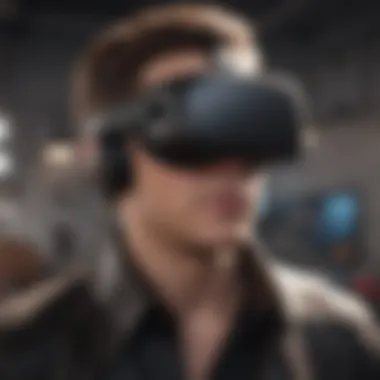
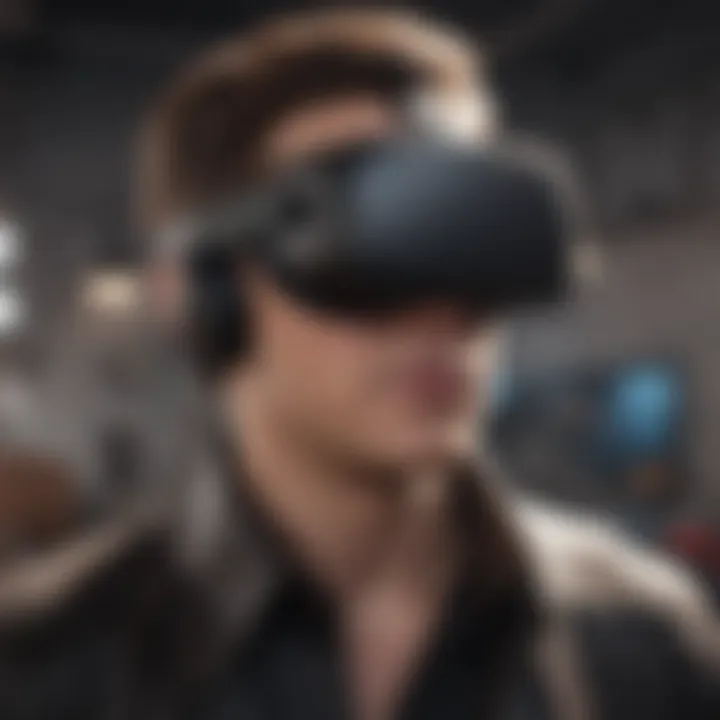
Connecting via USB cable can seem trivial, but it serves as a gateway to an expansive virtual realm filled with possibilities. Whether you’re a casual user or a committed gamer, this step is pivotal in ensuring that your VR experience is up to snuff.
Connecting via Air Link
Using Air Link to connect the Oculus Quest 2 to a PC is a pivotal element in unlocking the true potential of virtual reality gaming. This approach allows for an untethered experience, giving gamers the freedom to move around without the complications of physical cables. Unlike a wired connection, which can sometimes restrict movement or create a cluttered environment, Air Link promotes a seamless integration with your gaming setup.
In this section, we will delve into the critical steps and considerations needed to get Air Link working efficiently. By understanding how to prepare your PC, activate Air Link on your device, and establish a reliable wireless connection, you can elevate your gaming sessions beyond the ordinary.
Preparing Your PC for Air Link
Before diving into the connection process, it's essential to set your PC up for Air Link. A robust setup not only optimizes performance but also mitigates potential connection issues. Here’s what you need to consider:
- Hardware Requirements: Ensure that your PC meets the minimum system requirements for Air Link. It should have a decent graphics card, such as the NVIDIA GeForce GTX 1060 or AMD Radeon RX 480, and a CPU that can handle VR gaming, like the Intel i5-4590 or AMD Ryzen 5 1500X.
- Network Configuration: For the best performance, both your PC and Quest 2 should be on the same high-speed 5GHz Wi-Fi network. Using a dual-band router helps to avoid interference and enhance signal stability.
- Update Software and Drivers: Keeping your Oculus software and graphics drivers up to date is crucial. This reduces bugs and compatibility issues that could hinder your VR experience.
"A strong connection is the backbone of any great gaming experience. Take the time to set your equipment right, and you'll reap the rewards!"
Activating Air Link on Oculus Quest
After preparing your PC, the next step involves activating Air Link on your Oculus Quest 2. This process is straightforward, but every detail matters:
- Open the Oculus app on your headset.
- Navigate to Settings by selecting the gear icon in the main menu.
- In the Settings menu, go to Experimental Features and toggle Air Link to the "on" position.
- Once enabled, you will see an option to link to your PC when you return to the main menu.
- Your headset will start searching for your PC; make sure your Oculus software on PC is running too.
Establishing the Wireless Connection
Now that you’ve activated Air Link, it’s time to establish the wireless connection. Follow these steps to smoothly connect your Oculus Quest 2 to your PC:
- Launch the Air Link on your Quest 2. You will see a prompt to pair your headset with your PC. Select your PC from the list.
- Confirm the pairing. A confirmation popup will appear on your PC screen; accept it to establish the connection.
- Adjust your graphics settings as needed within the Oculus desktop application—higher settings can enhance visuals, but remember to balance them with performance for a smooth experience.
By taking the time to fine-tune these steps, gamers can ensure the best possible outcome when connecting the Oculus Quest 2 to a PC via Air Link. Stick with it, and you’ll find yourself fully immersed in a world of limitless gaming possibilities!
Troubleshooting Connection Issues
When diving into the world of virtual reality, establishing a seamless connection between your Oculus Quest 2 and PC can sometimes lead to unforeseen complications. This section shines a light on troubleshootin connection issues, a vital aspect of ensuring a smooth VR experience. Like a misplaced puzzle piece, even minor glitches can throw a wrench into your gameplay, potentially dragging your enjoyment down. Knowing how to troubleshoot effectively can save time, reduce frustration, and ultimately enhance your gaming experience.
Common Problems with Wired Connections
Using a USB cable seems simple enough, but a few common problems might rear their ugly heads:
- Cable Compatibility: Not all cables are created equal. For instance, using a poor-quality USB cable can lead to connectivity issues. Some may be designed just for charging, lacking the necessary data transfer capabilities.
- Port Issues: Sometimes, the problem lies not with the cable but with the USB port on either the Oculus or the PC. Checking for dust buildup or trying different ports can help. If a specific port refuses to cooperate, it may just need some TLC.
- Software Conflicts: An outdated version of the Oculus software can throw a spanner in the works. Regularly updating the software helps minimize compatibility problems.
If you find yourself fighting these issues, try swapping cables, using different USB ports, and ensuring your drivers and software are up to date should be your first go-to steps.
Common Problems with Wireless Connections
Wireless connections might sound ideal, yet they come with their own set of hurdles:
- Network Interference: Wi-Fi signals can be like a dance floor at a party—sometimes too crowded. Other devices, walls, and even microwaves can cause interference, affecting performance. Ensure your router is in an optimal location.
- Latency and Lag: If your connection is shaky, you might experience lag—a real buzzkill in VR. This typically happens with slower internet speeds or too many devices hogging the bandwidth. A test of your internet speed might reveal the problem.
- Device Compatibility: Not every device can handle Air Link optimally. Older PCs, particularly those without robust graphics capabilities, might struggle to connect to your Quest 2 wirelessly.
Troubleshooting wireless issues often involves checking for interference and possibly improving your network setup. Sometimes, simply relocating your router or reducing the number of devices connected can make a world of difference.
General Device Troubleshooting Techniques
When all else fails, sometimes what you really need is a quick refresher course on general troubleshooting techniques. Here are some tried and true methods:
- Restart Everything: It sounds cliché for a reason—it works! Restart both your Oculus and your PC. Sometimes, a full reset can clear connection issues.
- Check Settings: Ensure that the VR mode is activated on your PC, and that the Quest is set up correctly. Sometimes, it’s as easy as flipping a switch.
- Reinstall Software: If nothing else is clicking, reinstall the Oculus software. A fresh install can often clear bugs causing the headaches.
- Seek the Community: Don’t overlook platforms like reddit.com for tips from fellow gamers. Sometimes, the most useful nuggets of wisdom come from others who have walked the same path.
Remember: The troubleshooting process can feel daunting, but it's often just a matter of taking it step-by-step. Keeping a calm head and systematically addressing problems can turn a frustrating experience into a manageable one.
In simpler terms, when a connection issue hits, don’t panic. Look for the obvious culprits first and work your way through potential solutions methodically. With a little patience and sly thinking, you'll have your Oculus Quest 2 connected and ready for action in no time.
Optimizing the VR Experience

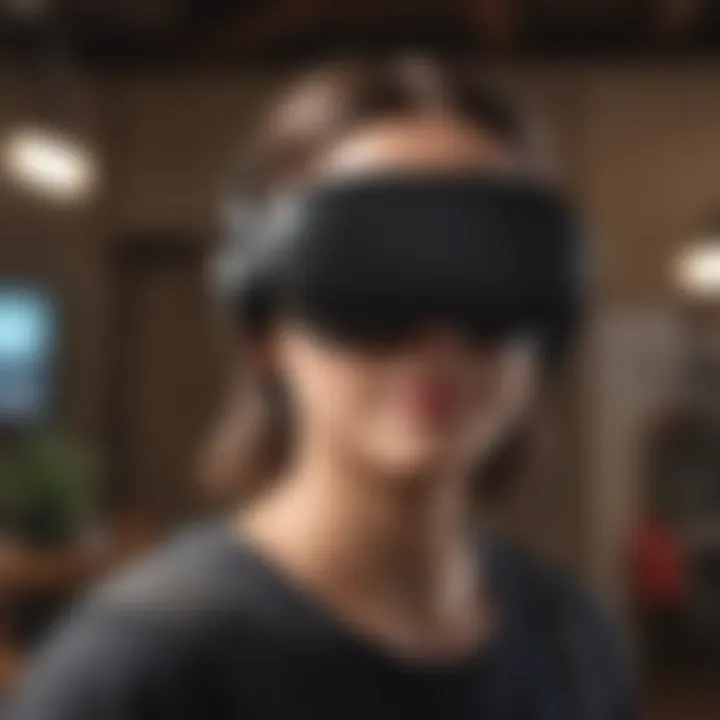
Getting the most out of your Oculus Quest 2 when connected to a PC is about more than just establishing a link – it’s all about optimizing that connection to elevate your virtual reality experience to new heights. Optimization plays a crucial role in ensuring that your graphics run smoothly, the performance is top-notch, and that you can fully immerse yourself in the VR world without a hitch. Investing time in this step means you’re not only enhancing the quality of your gameplay but you’re also ensuring that all the intricate details of your virtual adventures come to life.
Enhancing Graphics Settings
The beauty of virtual reality lies in its visuals - you want those breathtaking landscapes and intricate details to pop. After connecting your Oculus Quest 2 to your PC, dive into the graphics settings to tailor your experience.
- Resolution: Higher resolution provides crisp visuals, but be cautious as it may strain your system. Adjust resolution based on the capability of your computer to achieve that perfect balance between clarity and performance.
- Texture Quality: Invest in higher texture settings to give environments a more realistic look. This adjustment can significantly improve your immersion and can often be adjusted without sacrificing frame rates.
- Anti-Aliasing: This setting smooths out those rough edges you often see in 3D graphics. Setting it to medium or high will make your VR experience feel more polished.
- Field of View: This controls how much of the virtual world you can see at once. A wider field can enhance immersion, so if your system can handle it, give your setting a bump.
Remember, these adjustments can be trial and error. Test different configurations while you’re playing to find what truly feels right. A higher frame rate typically leads to a smoother experience, so keep an eye on that as you make changes.
"In the realm of VR, visual fidelity isn't just a perk—it's a necessity. The more vibrant the graphics, the deeper the immersion."
Adjusting Performance Parameters
After you’ve set the graphics, it’s time to shift gears slightly and focus on performance. While eye-catching visuals are vital, ensuring that your headset operates smoothly is equally important. Here are a few parameters of focus:
- Frame Rate: Aim for 90 FPS or higher to help reduce motion sickness. Most VR games are designed with a target frame rate, so match it for best performance. Use software like Oculus Performance Overlay to monitor and adjust your settings accordingly.
- Bit Rate: This affects the data transmitted to your headset. Higher bit rates often result in better visual quality but can impact performance if your network isn��’t up to par. Balance the numbers based on your connection type, especially when using wireless.
- FOV Scaling: In some cases, reducing the field of view can help improve performance. Scale back if necessary during more graphically demanding VR applications, then gradually increase as you find your comfort zone.
- Visual Fidelity Settings: Experimenting with these will give you insights into how your setup responds. You may find that lowering settings like shadows and lighting slightly can provide much-needed frames without wrecking the visuals.
Investing the time to fine-tune these performance parameters will ensure that your VR experience is fluid, responsive, and above all, a joy to explore. The key is finding that sweet spot where visuals don’t stutter and your adventures feel entirely enthralling.
By paying attention to both graphics and performance, you unlock the full potential of your gaming experience. Your Oculus Quest 2 can truly shine with the right tweaks.
Future Developments and Considerations
Establishing a robust connection between the Oculus Quest 2 and a PC is not just a technical necessity; it shapes the future of virtual reality itself. As technology evolves, so do the expectations of gamers and enthusiasts. Here, we will explore advancements in VR tech and the changing dynamics of PC gaming, focusing on their relevance for the Oculus Quest 2 connection.
Advancements in VR Technology
The landscape of virtual reality is shifting rapidly, with trends that could potentially redefine how we interact with digital experiences.
vr-headsets have improved significantly, allowing for richer graphics and more immersive experiences. With new GPUs on the market, gamers are getting to experience VR in ways they haven’t before. For instance, the advent of ray tracing in graphics cards enhances lighting and reflections, providing a more realistic environment. Furthermore, innovations in motion tracking sensors have made it possible to interact more intuitively within VR spaces. As developers optimize software to exploit these advancements, the importance of a high-quality connection between the Oculus Quest 2 and a PC becomes clearer.
In addition to hardware, software development has made leaps forward. Platforms like SteamVR are constantly evolving to allow for more expansive game libraries and better performance. This growth means that users of the Oculus Quest 2 can tap into diverse VR content, provided their connection—whether wired or wireless—can support it. Essentially, gamers should aim for a seamless blend of both hardware and software to unlock the full potential of their VR gaming environments.
Changing Dynamics of PC Gaming
As online gaming becomes more mainstream, the role of PCs in gaming has undergone a significant transformation. No longer just a means to run high-fidelity graphics, PCs have evolved into hubs for various forms of entertainment, including streaming, content creation, and, of course, VR experiences.
This shift presents implications for how gamers set up their systems. The interconnection of devices has led to a greater emphasis on compatibility and performance. For example, a user might need to balance gaming capabilities with video streaming performance if they’re playing and broadcasting simultaneously. This brings connectivity to the forefront. A stable, high-speed connection, whether through USB cables or Air Link, is vital to ensure that lag or performance bottlenecks don't hinder the gaming experience.
Moreover, subscription services for games are gaining traction, reshaping the way games are accessed and played. As these platforms prioritize featuring cutting-edge VR games, the demand for capable hardware to facilitate easy connections to the Oculus Quest 2 will grow. Consequently, users must be mindful of updating their systems to keep pace with industry standards.
The evolution of VR technology and PC gaming dynamics not only influences individual experiences but also heralds a broader transformation in recreational digital activities.
Ultimately, understanding these factors surrounding future developments will better prepare users to optimize their Oculus Quest 2 experience and adapt to an ever-evolving gaming landscape.
Closure
Establishing a connection between the Oculus Quest 2 and your PC is more than just a technical necessity; it's a gateway to a fully immersive virtual reality experience. This gives players the ability to access a wider range of titles and applications, vastly expanding the potential of their headset. Understanding the nuances of this connection—whether it’s via a USB cable or wirelessly through Air Link—is essential for anyone looking to delve deeper into the realm of VR.
In addition to the immediate benefits of connectivity, this knowledge equips gamers with the tools to troubleshoot potential issues that may arise. With the right preparations and settings, one can prevent common hiccups that often derail the gaming experience.
Through this article, we’ve unpacked the necessary hardware and software requirements, detailed the step-by-step processes for each connection method, and explored optimization techniques to ensure a smooth gameplay experience.
"Mastering the connection between Oculus Quest 2 and PC transforms an already amazing gaming experience into something truly spectacular."
Whether you are a casual gamer or a professional, taking the time to properly connect and optimize your setup will undoubtedly enhance your journey in the virtual world.
Summary of Key Points
- Connecting Oculus Quest 2 to a PC expands the range of VR experiences.
- Different connection methods (wired and wireless) offer distinct advantages.
- Proper hardware specifications and software setups are critical for success.
- Troubleshooting and optimization can significantly improve performance.
- Understanding these elements creates a more enjoyable and immersive experience.
Encouragement to Explore Further
As technology continuously evolves, it’s vital to keep up with new developments in VR and gaming. Don’t shy away from exploring community forums or platforms such as Reddit to gain further insights or share experiences with fellow gamers. Websites like en.wikipedia.org or britannica.com provide deep dives into VR technology that can enrich your understanding.
Consider experimenting with different settings or games that leverage the full capabilities of your connection. The Oculus community is growing every day, and being part of it not only keeps you informed, but also allows you to exchange tips with other enthusiasts. Whether it’s seeking advice on performance enhancements or discovering hidden gems in VR gaming, your adventure does not have to end here.



